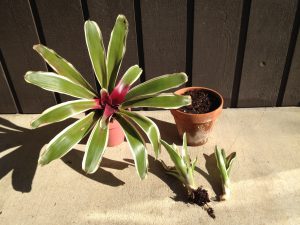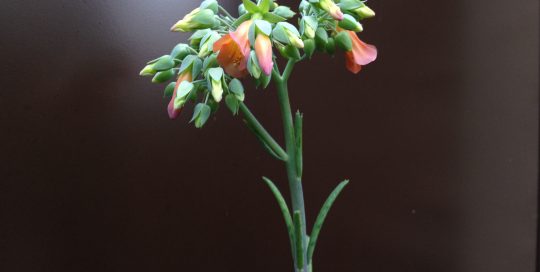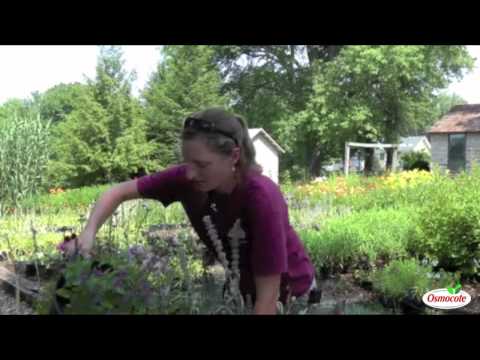Propagating Bromeliads
Views: 11887

Bromeliads belong to a huge family of plants called Bromeliaceae. There are over 50 genera and 3000 species in this plant family, with the most commonly known being the Pineapple. With their long-lasting blooms, amazing colors, and low maintenance needs, bromeliads are popular indoor plants. In fact, buying one bromeliad plant could provide you with a lifetime’s worth of plants if steps are taken to propagate the offsets of the original plant.
One of the properties I care for has a small collection of Neoregelia and Aechmea bromeliads that were all in bloom last summer, but had started looking ragged by fall. I explained to the homeowner that bromeliads slowly die after flowering and she told me to get rid of them. However, I knew that we could harvest the offsets of the plants, known as pups, that grow from the base of the original, or mother plant.
So instead of tossing them in the compost pile, I moved them into the greenhouse to overwinter with plans to propagate the pups in spring. The pups are exact genetic replicas of the mother plant and will mature, flower, and produce pups of their own in three to five years. Think about that, you could grow more than ten generations of bromeliads from one single plant over the course of a lifetime. How cool is that?
How to propagate bromeliads
Well, spring is here, so I just tried my hand at bromeliad propagation for the first time. I was a little hesitant when it came time to cut the pups away from the mother plant, since most of them had little or no roots of their own, but I mustered my courage and cut them off as close to the mother plant as possible. At this point, it is better to injure the mother plant than the pups since it is dying back anyways.
Since bromeliads don’t need a lot of soil, I filled a variety of four and six-inch pots with regular potting soil and gently inserted the base of each bromeliad pup so that it was barely nestled in the soil. A couple of them toppled over immediately, so I propped them up with small stakes. Since then , I have kept them barely watered, making sure to occasionally pour a little water into the center cup (or tank) of the plant, and two weeks later, each one has rooted and is doing well. I even repotted a few of the mother plants that still looked viable, in hopes that they might produce a few more pups.
Bromeliad propagation was much easier that I thought it would be, and I highly recommend adding one to your plant collection so that you can enjoy raising and propagating plants of your own. For more information on Bromeliads, see one of my earlier blog posts titled, “Bromeliads, Explained.”
Meet Abbi Hayes
Abbi's Recent Posts

Kalanchoe delagoensis: Mother of Millions







